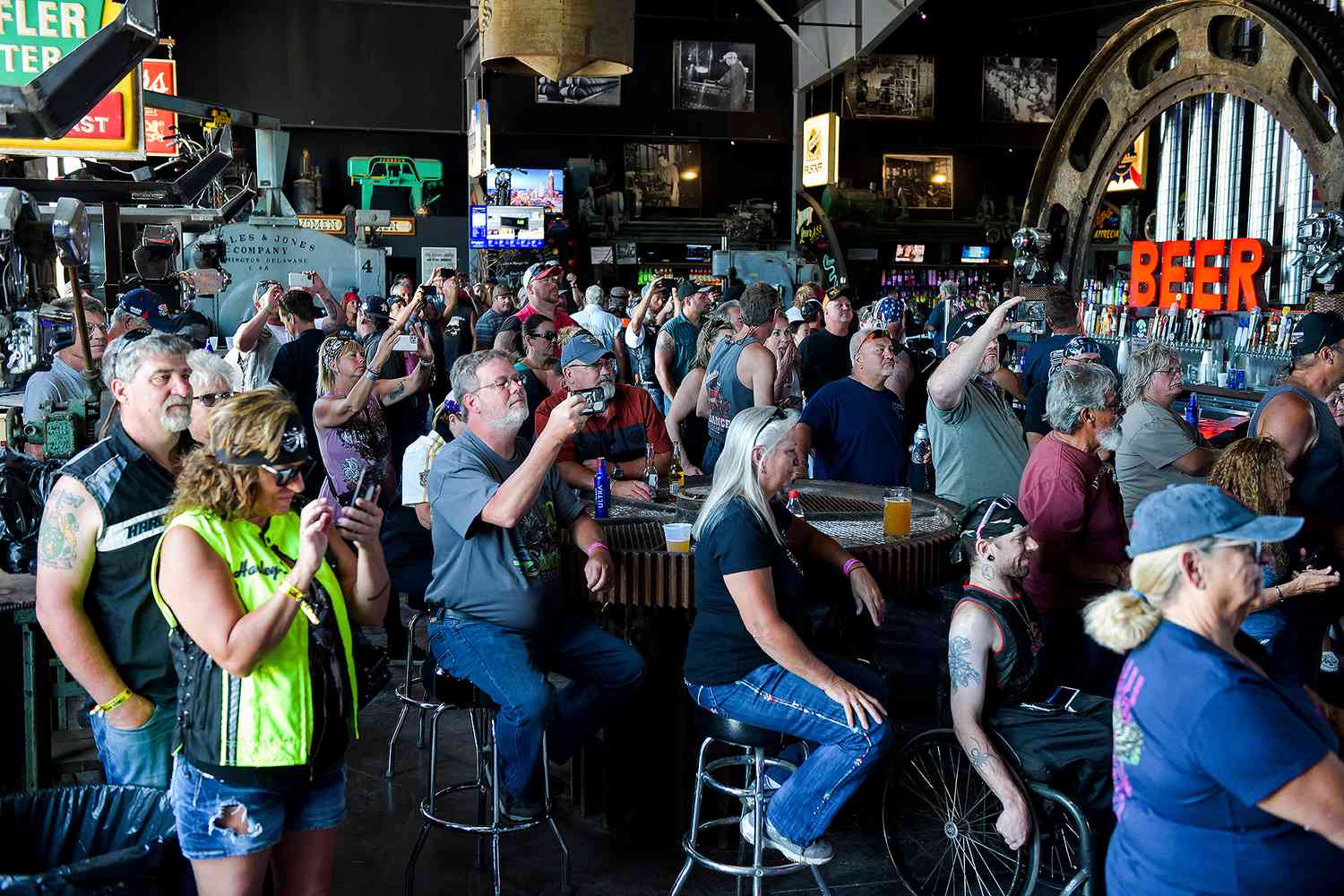
The Sturgis Motorcycle Rally, held in South Dakota in August, was likely a COVID-19 “superspreading event” and may have led to more than 260,000 cases, according to a new research model.
The annual motorcycle meet-up, which drew around 460,000 attendees this year, “represents a situation where many of the ‘worst-case scenarios’ for superspreading occurred simultaneously,” said researchers from San Diego State University’s Center for Health Economics & Policy Studies.
Using anonymous cellphone location data, the researchers tracked Sturgis attendees after they returned from the rally and looked at whether the number of COVID-19 cases in those areas went up. Based on that data, they estimated that 266,796 cases in the U.S., representing around 19 percent of new infections between Aug. 2 and Sept. 2, could be linked back to Sturgis.
Researchers said that the event, thought to be one of the largest gatherings held during the pandemic, had several “superspreading” factors — the close quarters at bars and hotels in the small town of Sturgis, the many out-of-town attendees, the lack of masks and that it was held over a lengthy 10 days.
The researchers estimated that Sturgis resulted in a public health cost of around $12.2 billion, as the average COVID-19 case costs $46,000.
"Even though the event benefited South Dakota economically, the majority of the health cost is being borne by the rest of the country," Andrew Friedson, one of the study authors, told Sioux Falls' Argus Leader.

South Dakota Gov. Kristi Noem pushed back on the study, calling it “fiction.”
"Under the guise of academic research, this report is nothing short of an attack on those who exercised their personal freedom to attend Sturgis,” Noem said in a statement. "Predictably, some in the media breathlessly report on this non-peer reviewed model, built on incredibly faulty assumptions that do not reflect the actual facts and data here in South Dakota."
Currently, the South Dakota Department of Health has identified 124 COVID-19 cases in state residents who got sick after attending Sturgis, and the Associated Press has tracked 290 in total across 12 states. One attendee, from Minnesota, died after contracting COVID-19 at the rally.
"The results do not align with what we know for the impacts of the rally," South Dakota epidemiologist Josh Clayton said Tuesday, according to the Argus Leader.
However, the study authors used a different method for tracking the spread of COVID-19. Instead of using contact tracing, which public health experts have said is difficult to employ for a large event with attendees from multiple states, they looked at the rise in cases in areas after the rally.
"We're never going to be able to contact trace every single person from Sturgis," Friedson said. "So if we want a good-faith estimate using, at the moment, the accepted statistical techniques … this is the best number we're going to get in my opinion."

Friedson and his fellow researchers have also traced the impact of Black Lives Matter protests and President Donald Trump’s Tulsa rally on COVID-19 cases in past studies, and found that neither event led to a significant rise in cases. He said that in those cases, people in the area often stayed home to avoid the events, reducing the number of cases. But with Sturgis, the large number of attendees overwhelmed the city’s population of just 7,000, making a “superspreading event” inevitable.
Sturgis officials had discussed canceling the 2020 rally due to COVID-19, which over 60 percent of surveyed residents said they would prefer, but voted to allow it after agreeing that the motorcycle enthusiasts would come no matter what. Attendance was down just 7.5 percent compared to 2019.
At the rally, attendees bar hopped, got free tattoos and hung out at campgrounds. Smash Mouth performed one night, and lead singer Steve Harwell was recorded yelling to the crowd, "F— that COVID s—."
As information about the coronavirus pandemic rapidly changes, PEOPLE is committed to providing the most recent data in our coverage. Some of the information in this story may have changed after publication. For the latest on COVID-19, readers are encouraged to use online resources from CDC, WHO, and local public health departments. To help provide doctors and nurses on the front lines with life-saving medical resources, donate to Direct Relief here.
Source: Read Full Article
